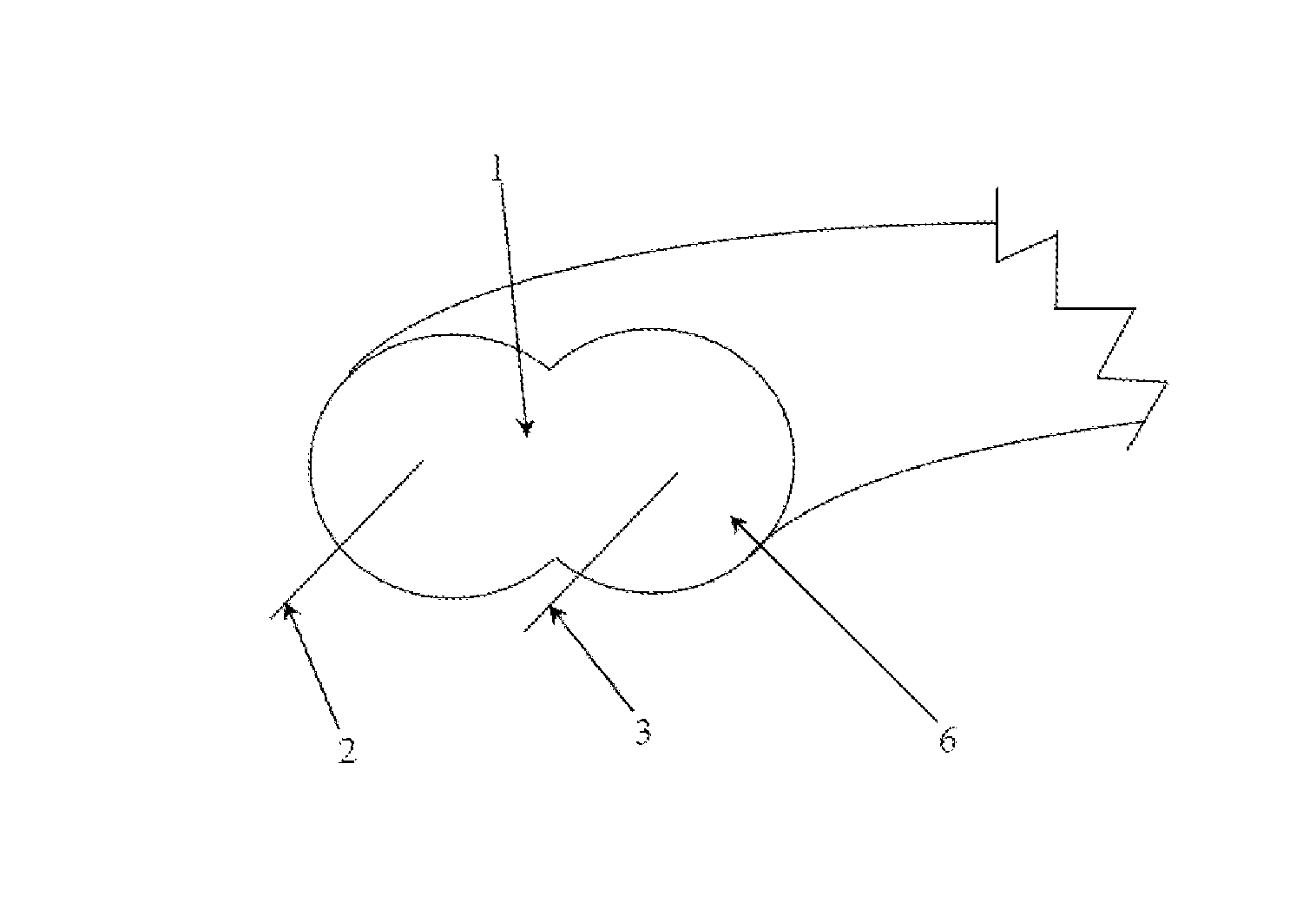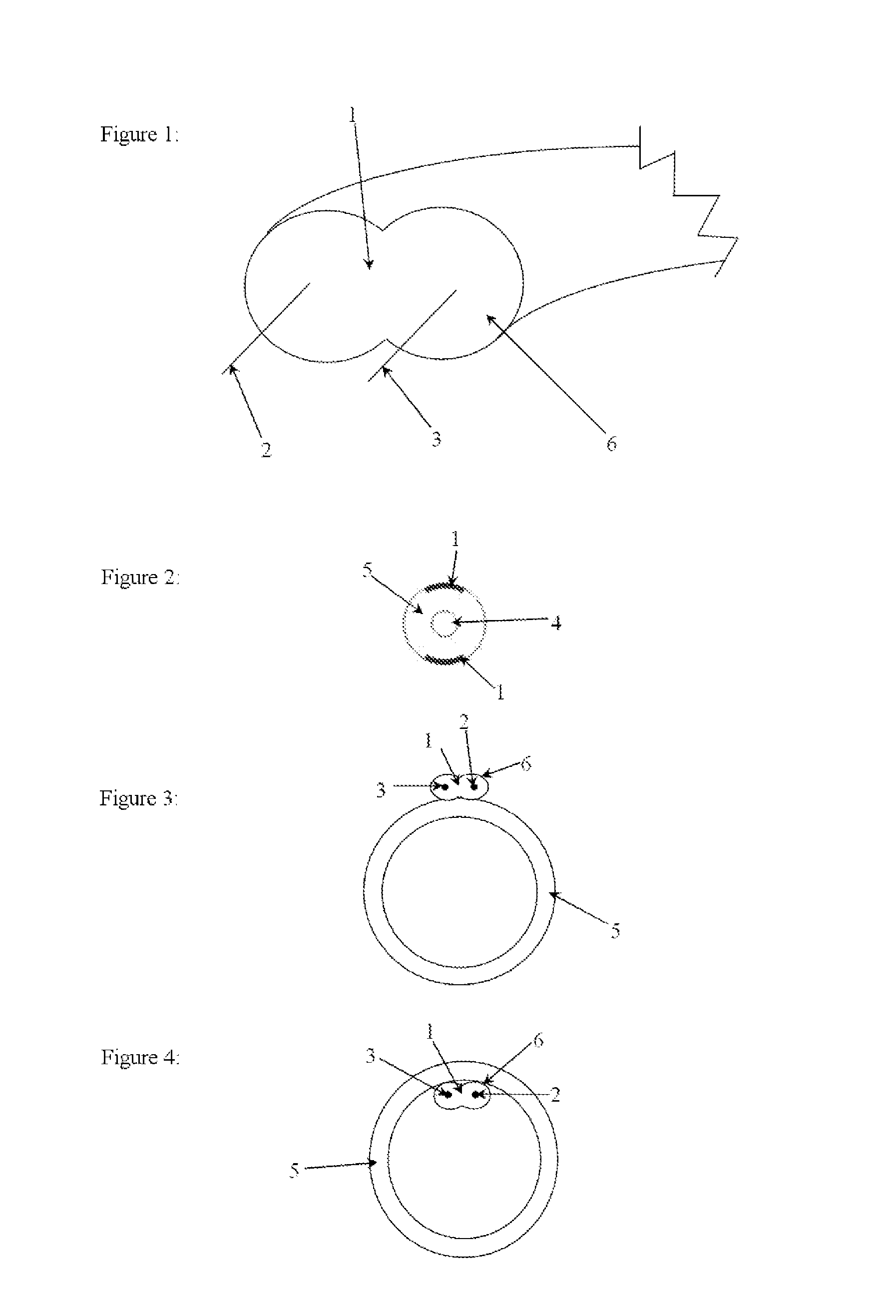Use of a polymer mixture as a sensor mixture
- Summary
- Abstract
- Description
- Claims
- Application Information
AI Technical Summary
Benefits of technology
Problems solved by technology
Method used
Image
Examples
Embodiment Construction
[0036]As a simple embodiment of the sensor mixture, carbon nanotubes (average diameter about 9.5 nm, an average length about 1.5 μm, 90% carbon, 10% metal oxides, BET surface area 250-300 g / m2) were mixed in mixture 1) to an extent of 2.1% by weight in 97.9% by weight of LDPE, and in mixture 2) to an extent of 6.5% by weight in 93.5% by weight of LDPE, and shaped by extrusion.
[0037]The measurement of the electrical resistance for mixture 1) gave the following values on aging at 100° C.:
Electrical resistance(ohms)Elongation at break (%)On day 01.52 × 1011143Day 77.34 × 1010not determinedDay 458.55 × 108 51
[0038]For mixture 1), a change in the resistance as a function of aging was measured. The aging was determined as the decrease in the elongation at break as a representative parameter for strength.
[0039]For mixture 2), no change in the resistance with aging was found. This is attributed to the fact that the content of carbon nanotubes was too high to show aging-related changes in el...
PUM
| Property | Measurement | Unit |
|---|---|---|
| Fraction | aaaaa | aaaaa |
| Percent by mass | aaaaa | aaaaa |
| Percent by mass | aaaaa | aaaaa |
Abstract
Description
Claims
Application Information
 Login to View More
Login to View More - R&D
- Intellectual Property
- Life Sciences
- Materials
- Tech Scout
- Unparalleled Data Quality
- Higher Quality Content
- 60% Fewer Hallucinations
Browse by: Latest US Patents, China's latest patents, Technical Efficacy Thesaurus, Application Domain, Technology Topic, Popular Technical Reports.
© 2025 PatSnap. All rights reserved.Legal|Privacy policy|Modern Slavery Act Transparency Statement|Sitemap|About US| Contact US: help@patsnap.com


